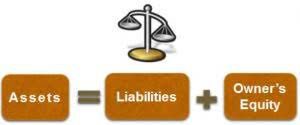
For example, the equity of a company with $1 million in assets and $500,000 in liabilities is $500,000 ($1,000,000 – $500,000). The share capital represents contributions from Online Accounting stockholders gathered through the issuance of shares. Shareholders’ equity can be calculated by subtracting a company’s total liabilities from its total assets, both of which are itemized on the company’s balance sheet. Return on equity is a measure that analysts use to determine how effectively a company uses equity to generate a profit. It is obtained by taking the net income of the business divided by the shareholders’ equity.

Free Financial Modeling Lessons
A company with a high ROE and strong reinvestment strategies is more likely to experience sustainable growth. Investors often look at ROE alongside the company’s reinvestment rate to assess future earnings potential. Accurate reporting ensures transparency, compliance with regulations, and provides valuable information to investors, analysts, and other stakeholders for making informed decisions. GAAP and IFRS have different guidelines for reporting and classifying equity transactions. For instance, IFRS may have different requirements for presenting changes in equity and recognizing certain equity components. Auditing standards also play a significant role in the regulatory framework.
Understanding Shareholders’ Equity
If this figure is negative, it may indicate an oncoming bankruptcy for that business, particularly if there exists a large debt liability as well. A company that operates without debt might have a lower ROE than one with more debt, not because they are less efficient, but because they have a larger equity stockholders equity formula base. Investors should be careful not to rely too heavily on ROE when comparing companies with different debt levels. Here’s how investors and analysts use Return on Equity in their financial evaluations. A consistently high ROE is an indicator of strong management and operational efficiency, something that investors value highly. Future trends may include changes in regulatory standards, evolving accounting practices, and increasing emphasis on sustainability and corporate governance in equity reporting.
What are the key points to remember about Shareholder Equity?
The stockholders’ equity is only applicable to corporations who sell shares on the stock market. For sole traders and partnerships, the corresponding concepts are the owner’s equity and partners’ equity. This formula is known as the investor’s equation where you have to compute the share capital and then ascertain the retained earnings of the business. Positive shareholder equity means the company has enough assets to cover its liabilities.
Profits made by a company that are not paid out as dividends to stockholders (shareholders) but rather are set aside for reinvestment in the company are known as retained earnings (RE). Working capital, the purchase of fixed assets, or debt repayment are just a few uses for retained earnings. Although APIC is an important element of the shareholders’ equity formula, it is not universal. APIC happens only when investors purchase shares by directly approaching the company issuing such shares.

- Public companies must adhere to stringent regulatory and reporting requirements when accounting for shareholder equity.
- Tech and software companies tend to have higher ROEs due to their use of asset-light models while manufacturing companies have lower ROEs due to high capital investments.
- If it’s in the black, then the company’s assets are more than its liabilities.
- Each of these activities can either increase or decrease shareholder equity, depending on their nature and execution.
- As for the “Treasury Stock” line item, the roll-forward calculation consists of one single outflow – the repurchases made in the current period.
Shareholder equity is recorded in the equity section of the balance sheet, typically under sections such as common stock, additional paid-in capital, retained earnings, and treasury stock. Preferred stock, common stock, retained earnings, and accumulated other comprehensive income are all included in shareholders’ equity. It is possible to determine a company’s shareholders’ equity by deducting its total liabilities from its total assets, both of which are listed on the balance sheet. In the absence of a balance sheet, the shareholder’s equity can be determined by adding up all assets and deducting all liabilities to get the shareholder’s equity.

The dividends are the third factor that has an impact on shareholders equity Legal E-Billing on the balance sheet. In accounting for share-related transactions, a few more phrases are crucial. The number of shares authorized is the total number of shares that the corporation may issue under the articles of incorporation of the business.

Shareholders’ equity isn’t the sole indicator of a company’s financial health, however. It should be paired with other metrics to obtain a more holistic picture of an organization’s standing. What remains after deducting total liabilities from the total assets is the value that shareholders would get if the assets were liquidated and all debts were paid up. For example, if the assets are liquidated in a negative shareholder equity situation, all assets will be insufficient to pay all of the debt, and shareholders will walk away with nothing.